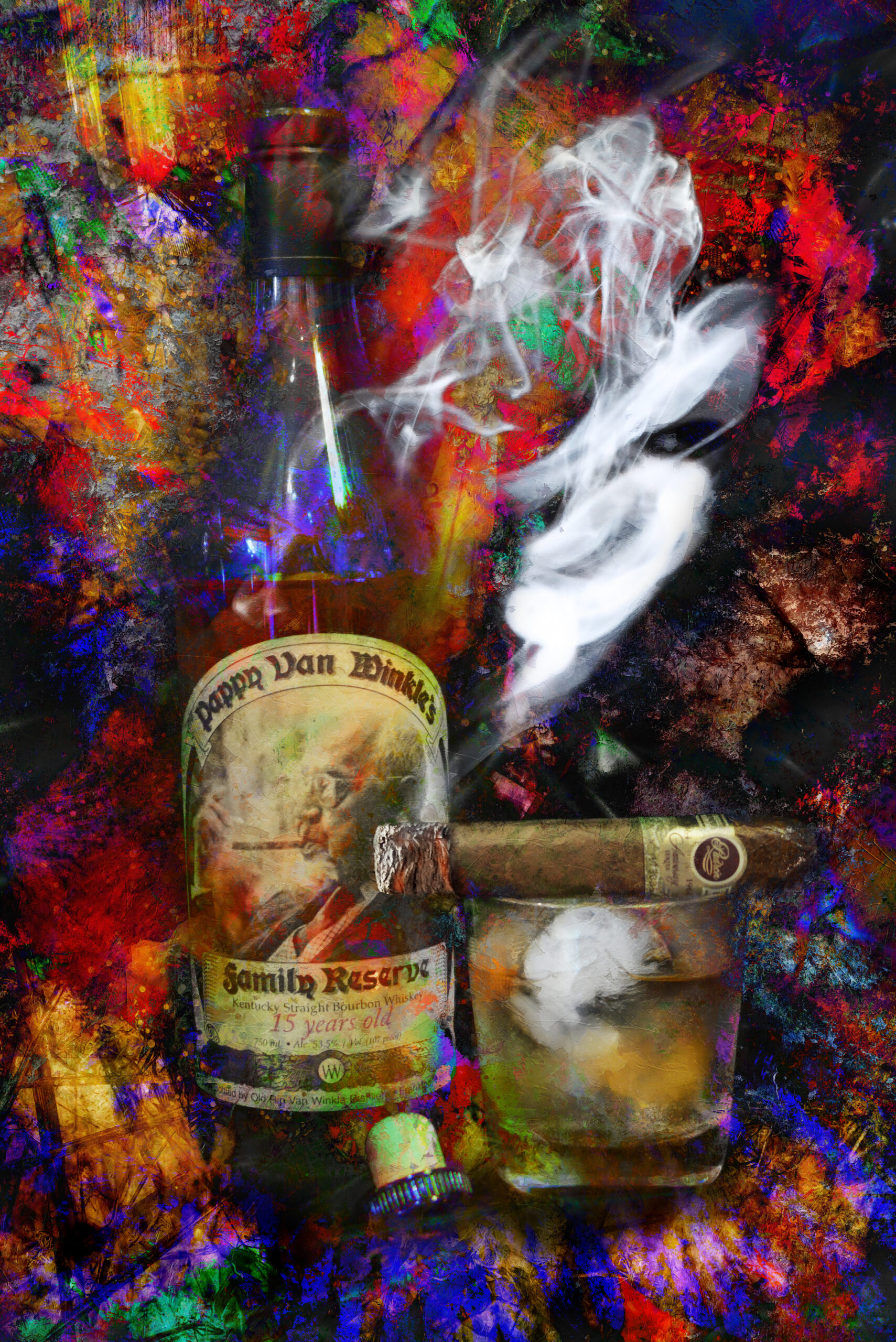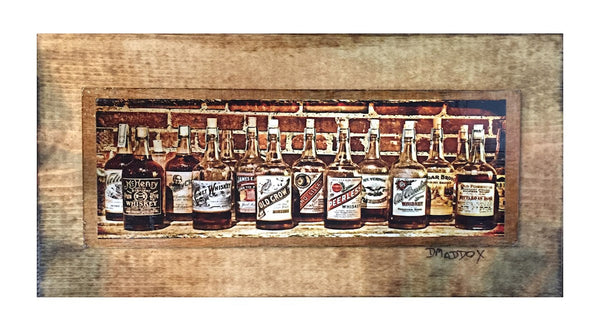Introducing the Charm of Bourbon Art: A Homage to Craft Distillers
Wiki Article
The Significance of Whiskey Art in Celebrating Heritage and Craftsmanship in the Beverage Sector
The complex relationship in between scotch art and the party of heritage and craftsmanship within the drink sector can not be overemphasized. Through attentively created bottles and labels, whiskey brand names envelop their historical roots and the artisanal skills that specify their production methods.The Historic Roots of Whiskey
At the heart of whiskey's attraction exists a rich tapestry of historic origins that trace back to ancient worlds. The origins of bourbon can be connected to the purification techniques of the Sumerians and Babylonians around 2000 BCE, where very early types of fermented grain drinks began to arise. It was in the Middle Ages that the art of distillation progressed dramatically, especially in Ireland and Scotland, leading to the creation of whiskey as we know it today.
The term "whiskey" itself stems from the Gaelic word "uisce beatha," indicating "water of life." This expression underscores the social relevance of scotch in Celtic cultures, where it was typically linked with rituals, events, and common bonding. By the 15th century, distillation became a recognized craft within monastic areas, leading the means for the facility of lawful distilleries.
As trade routes broadened, whiskey's appeal expanded, transcending local boundaries and recording the rate of interest of connoisseurs worldwide. Realism Art. This historic journey reflects not only the craftsmanship behind bourbon manufacturing however also its essential duty in social and social contexts, noting it as a substantial drink throughout background
Artistic Expression in Branding
Bourbon branding stands as a compelling intersection of creativity and commerce, where visual identification plays an essential function fit consumer perception. The visual appeals of whiskey labels, packaging, and marketing products reflect not just the brand's story however additionally its core values and heritage. Via creative expression, distilleries convey a narrative that resonates with customers, evoking feelings and stimulating connections.The use of shade, typography, and images in branding serves to differentiate products in a saturated market. As an example, standard motifs may evoke a feeling of authenticity and craftsmanship, while modern layouts can represent development and forward-thinking. This critical artistic direction boosts brand acknowledgment and loyalty, allowing consumers to build a personal partnership with the bourbon they pick.
Moreover, creative expression in branding typically works as a party of local heritage. Distilleries frequently integrate neighborhood icons or historic references into their designs, producing a sense of location that invites customers to take part in a more comprehensive social experience. Eventually, the virtuosity behind scotch branding not just boosts aesthetic allure yet also enriches the total story of the brand, cultivating a deeper admiration for the workmanship and heritage embedded in each bottle.
Craftsmanship in Bottle Layout
The artistry obvious in whiskey branding extends beyond aesthetic identification to encompass the workmanship associated with bottle layout. Each container acts as a vessel not simply for the spirit within, yet likewise for the story it outlines its high quality, beginning, and tradition. The layout process requires precise focus to information, as elements such as product, form, and closure add considerably to the total understanding of the whiskey.Craftsmanship in container design entails selecting high-quality glass that can boost the whiskey's color and quality, while also providing a tactile experience for the customer. The silhouette of the bottle need to be both practical and aesthetically appealing, usually showing the heritage of the brand name. Numerous distilleries choose unique shapes or embossed logo designs that stimulate a sense of authenticity and history.
Additionally, the label layout and typography play an essential role in communicating the brand's story. Whiskey Art. A well-crafted bottle not just mesmerizes the consumer's eye yet likewise enhances the brand's dedication to quality and custom. This way, the craftsmanship of bottle style ends up being a crucial aspect of the bourbon experience, merging virtuosity with a profound respect for heritage
Cultural Value of Whiskey Art
Celebrating custom and workmanship, the social importance of scotch art transcends plain appearances, intertwining with the historic and social narratives of the areas from which it originates. Each container offers as a canvas, illustrating the special tales, folklore, and practices that have actually shaped neighborhood whiskey-making practices. The detailed layouts usually reflect the heritage of the distillers, including signs and concepts that reverberate with the society and values of their communities.
Additionally, whiskey art plays an important function in communal gatherings and celebrations, working as a concrete web link between people and their shared experiences. By appreciating the creativity in bourbon product packaging, consumers cultivate a much deeper understanding and regard for the craft, ultimately enhancing their pleasure of the beverage itself.
Modern Trends in Bourbon Presentation
In recent times, the presentation of bourbon has developed to mirror contemporary preferences and patterns while still recognizing standard workmanship - Realism Art. Distilleries are progressively concentrating on visual aspects that enhance the general drinking experience, connecting the gap in between heritage and modernityCutting-edge bottle designs have emerged, usually integrating sustainable materials and artistic labels that inform engaging tales. Several brand names now team up with local musicians, instilling their products with special visual expressions that resonate with customers. In addition, limited-edition releases are frequently packaged in collectible containers, adding worth and appeal for aficionados.

Conclusion
Finally, whiskey art works as a vital avenue for revealing the heritage and workmanship integral in the drink industry. Through elaborate branding, innovative bottle layouts, and culturally significant creative components, whiskey brand names properly recognize their customs and get in touch with consumers. This artistic story not only boosts the gratitude of whiskey but additionally enhances community identification and satisfaction amongst manufacturers. Ultimately, scotch art plays an essential function in preserving and commemorating the abundant cultural tapestry of whiskey-making.

Workmanship in bottle style includes choosing high-quality glass that can boost the whiskey's color and quality, while likewise offering a tactile experience for the consumer. In this means, the craftsmanship of container design ends up being a vital facet of the whiskey experience, merging virtuosity with a profound respect for heritage.
In verdict, scotch art serves as an essential avenue for sharing the heritage and craftsmanship fundamental in the beverage industry.
Report this wiki page